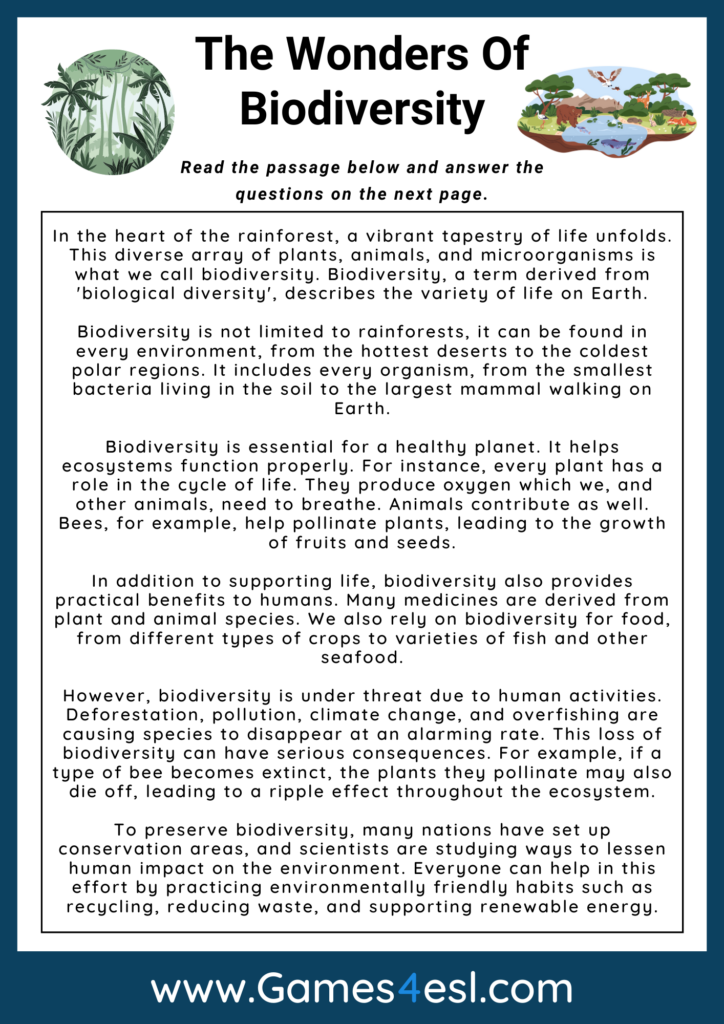Biodiversity Reading Comprehension

This reading comprehension worksheet is about biodiversity. It discusses what biodiversity is, why it is important, and how biodiversity is under threat due to human activities. To complete the worksheet, students are asked to read the passage and then complete five reading comprehension questions on the next page.
Complete Online
Save paper and complete this reading comprehension online! Read the passage below about biodiversity and answer the five questions below.
The Wonders Of Biodiversity
Read the passage and then answer the questions below.
In the heart of the rainforest, a vibrant tapestry of life unfolds. This diverse array of plants, animals, and microorganisms is what we call biodiversity. Biodiversity, a term derived from ‘biological diversity’, describes the variety of life on Earth.
Biodiversity is not limited to rainforests, it can be found in every environment, from the hottest deserts to the coldest polar regions. It includes every organism, from the smallest bacteria living in the soil to the largest mammal walking on Earth.
Biodiversity is essential for a healthy planet. It helps ecosystems function properly. For instance, every plant has a role in the cycle of life. They produce oxygen which we, and other animals, need to breathe. Animals contribute as well. Bees, for example, help pollinate plants, leading to the growth of fruits and seeds.
In addition to supporting life, biodiversity also provides practical benefits to humans. Many medicines are derived from plant and animal species. We also rely on biodiversity for food, from different types of crops to varieties of fish and other seafood.
However, biodiversity is under threat due to human activities. Deforestation, pollution, climate change, and overfishing are causing species to disappear at an alarming rate. This loss of biodiversity can have serious consequences. For example, if a type of bee becomes extinct, the plants they pollinate may also die off, leading to a ripple effect throughout the ecosystem.
To preserve biodiversity, many nations have set up conservation areas, and scientists are studying ways to lessen human impact on the environment. Everyone can help in this effort by practicing environmentally friendly habits such as recycling, reducing waste, and supporting renewable energy.
